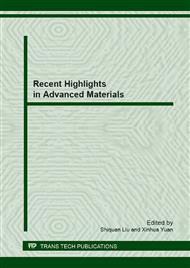p.170
p.174
p.179
p.183
p.188
p.194
p.198
p.203
p.209
Numerical Analysis on the Influence of Interface on the Mechanical Behavior of Unidirectional Fiber Composites under Different Loads
Abstract:
On the smallest structural scale in the multi-scale structure composites, namely fiber scale, a numerical model was proposed for the analysis on the mechanical properties of unidirectional composites through the representative unit cell (RUC). The progressive method was used to simulate the failure behavior of fiber and matrix, and the debonding between fiber and matrix was characterized by the cohesive zone model (CZM). The failure strength of the unidirectional composite was predicted, and the influence of the interfacial strength on the mechanical behavior of unidirectional composite was discussed. It is shown that fiber dominates the failure strength of the material under the longitudinal load, whereas under the transverse load interfacial properties play an important role in the mechanical behavior of the material. The increase of the interfacial strength can significantly improve the capability of transverse compression and shear resistance.
Info:
Periodical:
Pages:
188-193
Citation:
Online since:
September 2013
Authors:
Keywords:
Price:
Сopyright:
© 2014 Trans Tech Publications Ltd. All Rights Reserved
Share:
Citation:


